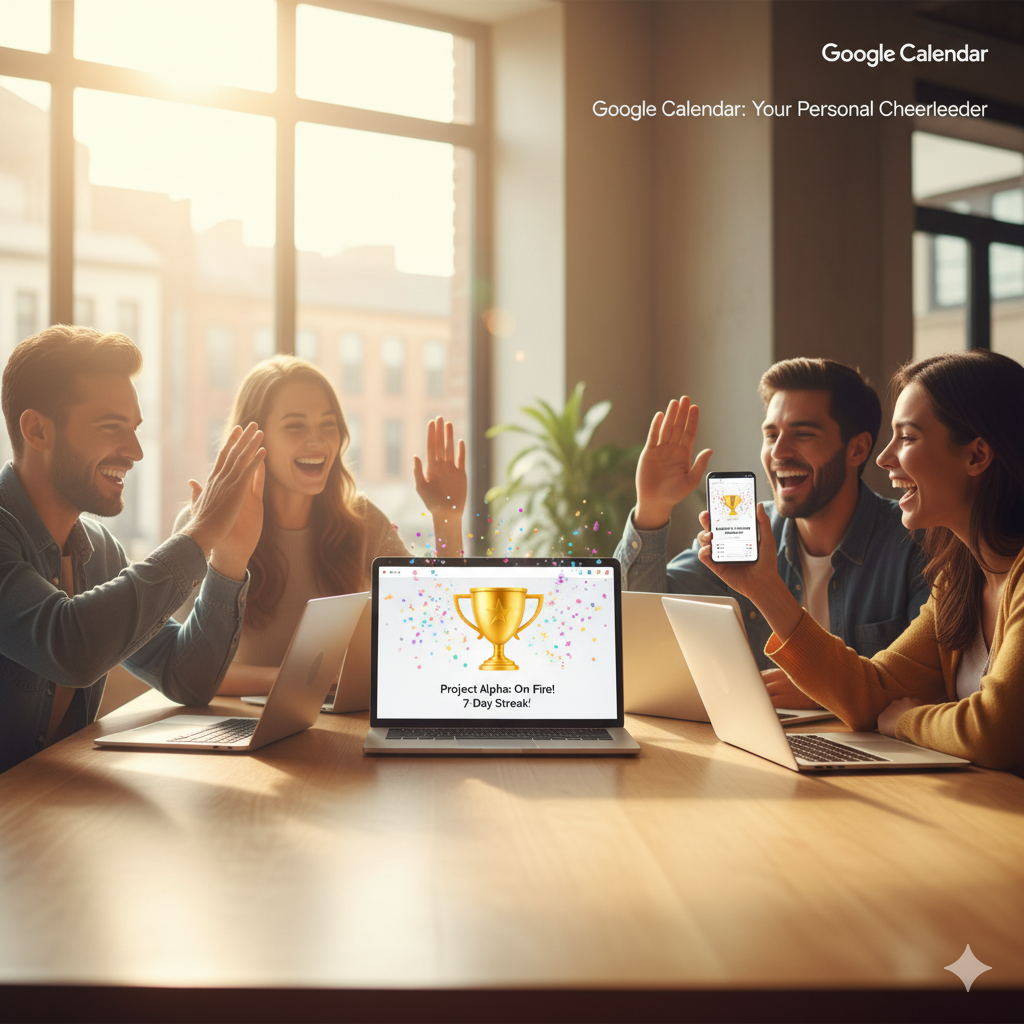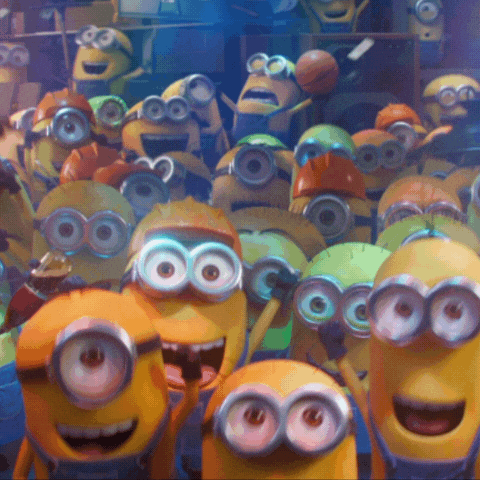Google Calendar: Your Personal Cheerleader
Concept Design – Mockup
Celebrate every win, big or small.
What did you achieve today? Google Calendar becomes your personal cheerleader, remembering and celebrating every accomplishment—big or small. Feel the joy of a simple checkmark and let your routine fill with quiet encouragement through Micro-Celebrations Mode.
Google Calendar × Celebrating Progress 📅
The Origin of the Project — Emptiness in a Busy Routine
This project began with something I felt during one particularly busy semester. My Google Calendar was always overflowing—career fairs, meetings, club events, study sessions, internships. It organized my life perfectly, yet emotionally, it felt empty.
One night, after crossing off every task, I sat in front of my screen. The message said, “All tasks completed. Nice work!” But instead of feeling proud, I felt… nothing. The calendar had recorded my productivity, but not my effort. Tomorrow’s long list of tasks already awaited me.
That moment made me realize something simple but powerful: efficiency isn’t the same as fulfillment. Even when I was doing my best, nothing truly acknowledged it.
A Calendar Can Be Your Personal Cheerleader
I started wondering—what if a calendar could do more than manage schedules? What if it could celebrate progress? Humans thrive on recognition, even for the smallest wins. A little “You did it!” or a spark of color can lift our mood and motivate us to keep going.
Just as the Minions cheer for Gru no matter how small the victory, your calendar could cheer for you. It could be more than a planner—it could be a partner that celebrates effort, turning the repetition of daily tasks into a rhythm of encouragement.
That’s where this project began: to fill the emotional void behind productivity and remind us that our small efforts matter.
Insight — Productivity Feels Better When It’s Celebrated
A calendar doesn’t have to be neutral—it can be uplifting.
A 2022 Gallup study found that 58% of employees who feel unrecognized experience higher burnout, while a Harvard Business Review study on “The Progress Principle” proved that people are most motivated when they experience small wins.
Yet most digital planners still stop at “task completed.” They manage time but fail to nurture the human side of progress. By giving users emotional feedback—tiny celebrations, words of encouragement, or a playful sparkle—Google Calendar can make productivity feel personal again.
Solution — Micro-Celebrations Mode 🎉
An optional mode that turns daily task-checking into moments of joy and motivation.
✨ Surprise Animations
When you complete an important task, a small celebration appears—fireworks, stars, or confetti bursting for a second. It’s a gentle “well done” that makes finishing a task feel satisfying.
🏅 Streak Celebrations
For recurring habits, your streaks unlock subtle badges or icons that visualize consistency. “5 days in a row!” feels more rewarding when it’s seen and celebrated.
💬 Motivational Boosts
As you reach milestones, the app might say, “80% of this week’s goals completed 👏 Great job!” These small boosts remind you how far you’ve come, not just how far you have to go.
👨👩👧 Shared Calendar Celebrations
When using shared calendars, teammates or family can see and celebrate your achievements too. Imagine your sibling seeing a confetti burst when you complete a shared goal—it turns routine coordination into shared joy.
Impact
For users, Google Calendar becomes more than a planner—it becomes a quiet, constant source of motivation. Productivity feels less mechanical and more human, transforming routines into rewarding journeys.
For Google, it adds an emotional layer to a core product. According to a Forrester study, companies that deliver exceptional UX see 400% higher user retention. By pairing efficiency with empathy, Google Calendar could become not just a productivity tool, but the most supportive partner in your personal growth.
—
Speculative UX Concept by Jin Kim
Visual mockups generated with Gemini & ChatGPT (for concept purposes only)





